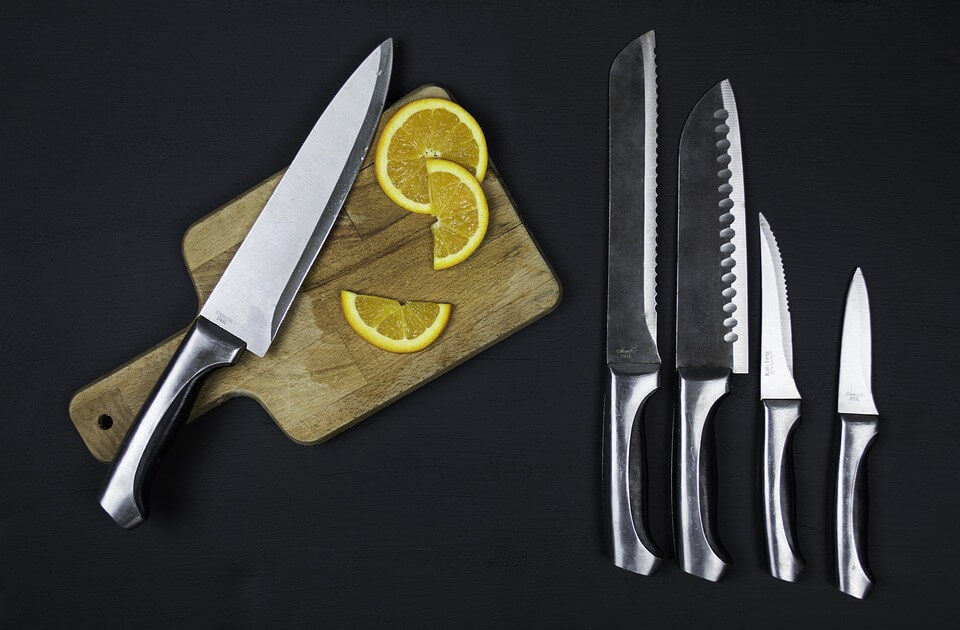Knives are necessary tools in the kitchen, and choosing the right one can bring different results to your cooking.
But what are the differences between a Chinese cleaver and a chef knife? While they are both excellent assistants in the kitchen, you should make your decisions for different tasks.
In this guide, we will discover their differences and help you decide which is your choice in the kitchen. Let’s get started!
What is a Chinese Cleaver?
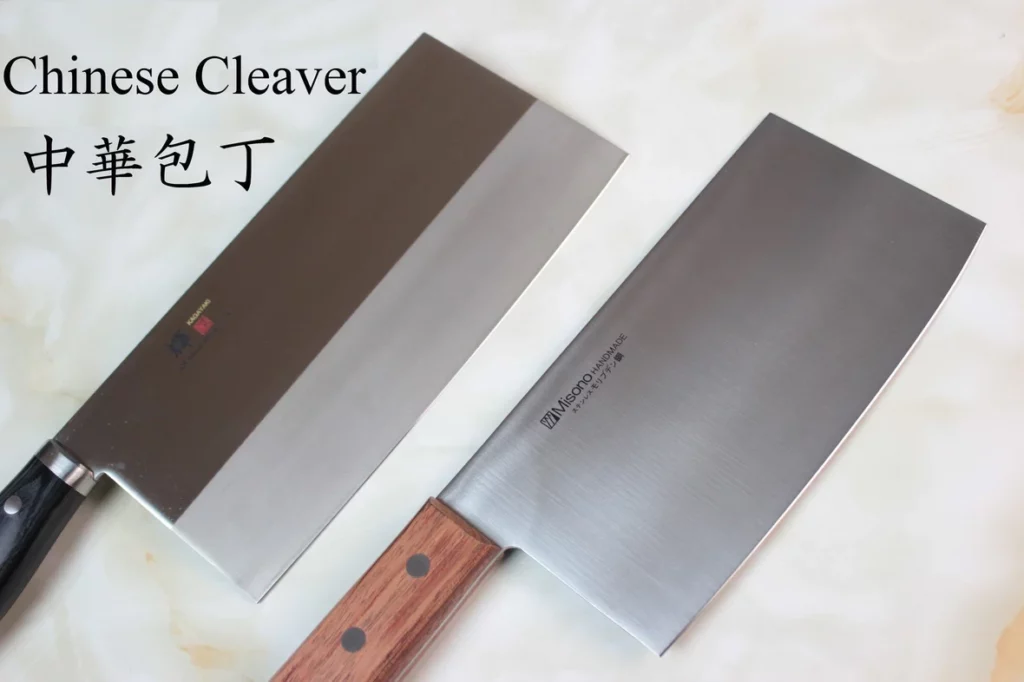
The name of the Chinese cleaver already gives us solid evidence of its origin.
Chinese cleavers are not only an essential tool in Chinese cooking, but they can act great in other cuisines that require precise and efficient cutting techniques.
Manufacturers use high-carbon steel when making Chinese cleavers. Thanks to its materials, the Chinese cleaver is strong and durable and can hold a sharp edge for an extended time.
In addition to their functional properties, people often consider the Chinese cleaver an extension of the cook’s hand. The Chinese cleaver helps users to create dishes that are both aesthetically pleasing and delicious.
What is a Chef Knife?
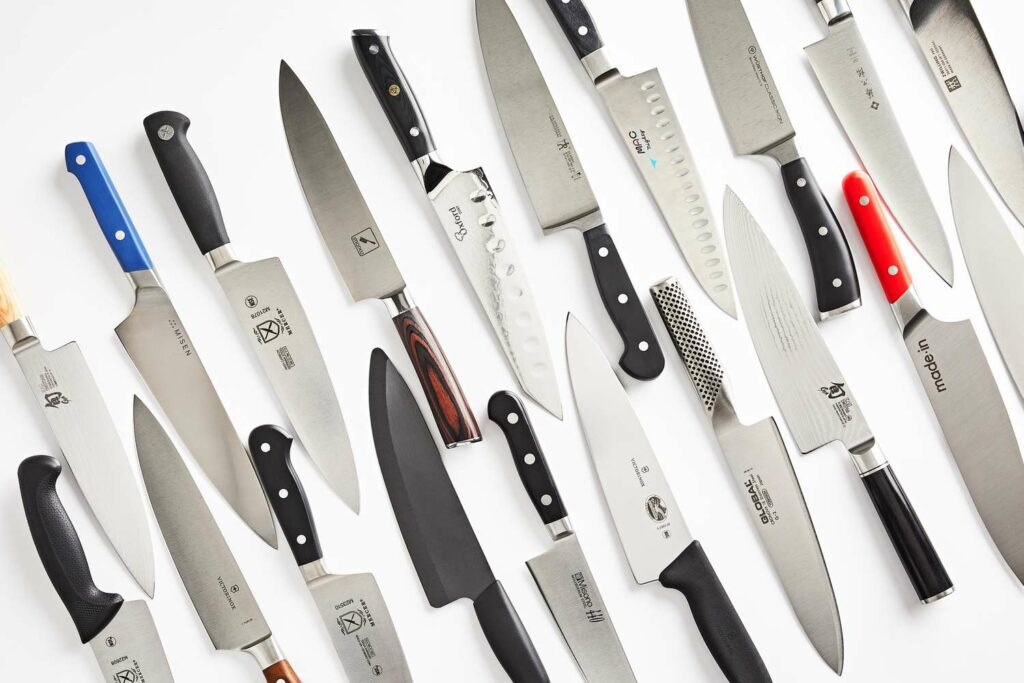
A chef knife is a versatile cutting tool that people widely use in Western cuisine.
You can use a chef knife to deal with cutting tasks, including chopping, slicing, and dicing vegetables, fruits, and meats. They are also suitable for mincing herbs and crushing garlic.
One of the unique characteristics of a chef knife is its curved blade, which makes it easier to chop and slice. The blade’s sharp edge and pointed tip also make it suitable for precision cutting tasks.
People often refer to the chef knife as the most important tool in a kitchen kit.
The Differences Between a Chinese Cleaver and Chef Knife
The Chinese cleaver and chef knife are two of the most common types of knives used in the kitchen. So make sure you know all about their differences.
1. Blade
The Chinese cleaver has a distinct rectangular shape and a broad blade. Manufacturers produce it with either plastic or wood handles, along with carbon or stainless steel blades.
The Chinese cleaver has various sizes, with the blade varying from 6 to 9 inches long and 0.07 to 0.31 inches thick.
The knife’s weight can vary based on its intended use and design, making it appropriate for various kitchen tasks. This weight range can change significantly, from 300g to over 900g.
Manufacturers can also use the same materials as the Chinese cleaver to make the chef knife. People use the chef knife within lengths of 6 inches, 8 inches, or 10 inches, but 6-8 inches are more common. And an ideal blade thickness for a chef knife is around 0.01 inches.
The measurement refers to the blade length rather than the knife’s length. People may choose larger or smaller blades depending on their specific needs.
A chef knife can weigh differently depending on size, design, and materials. People often choose a chef knife with a weight between 200g and 300g. Yet, heavier models weighing up to 500g are also a choice for some special purposes.
The shape is one of the significant distinguishing factors between a Chinese cleaver and a chef knife.
In general, a Chinese cleaver tends to have a longer and thicker blade than a chef knife. And a Chinese cleaver is also heavier in weight.
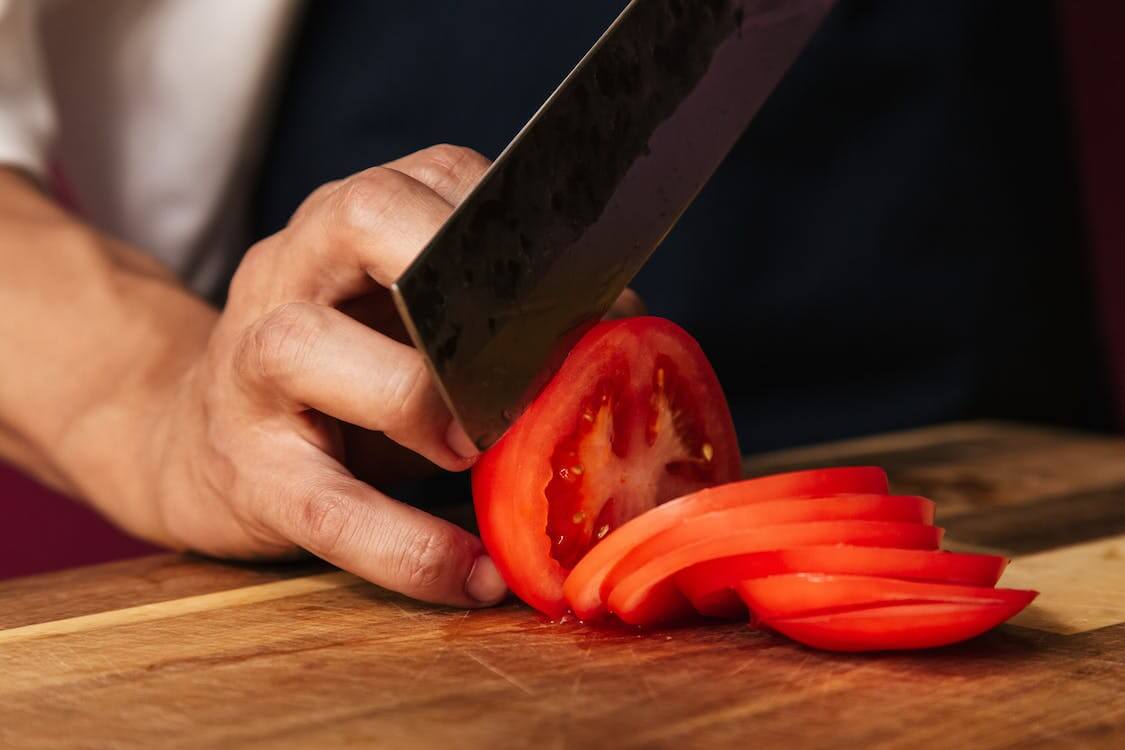
2. Balance
A well-balanced knife distributes weight evenly from its tip to its handle, providing a comfortable and stable grip.
While there is no exact definition of a well-balanced knife, manufacturers generally design a knife for comfortable use and precision cutting.
The blade of a Chinese cleaver centers most of its weight, with the rectangular blade’s upper edge featuring a full tang that extends into the handle to enhance durability and strength.
On the other hand, in a chef knife or other Western knife, designers often focus on the handle. They make it heavier than the blade, resulting in a balance point that centers at the butt of the blade connected with the handle. This design allows for better control.
It doesn’t mean the balance of a chef knife is better than a Chinese cleaver. It just takes you more time to get familiar with how to use a Chinese cleaver.
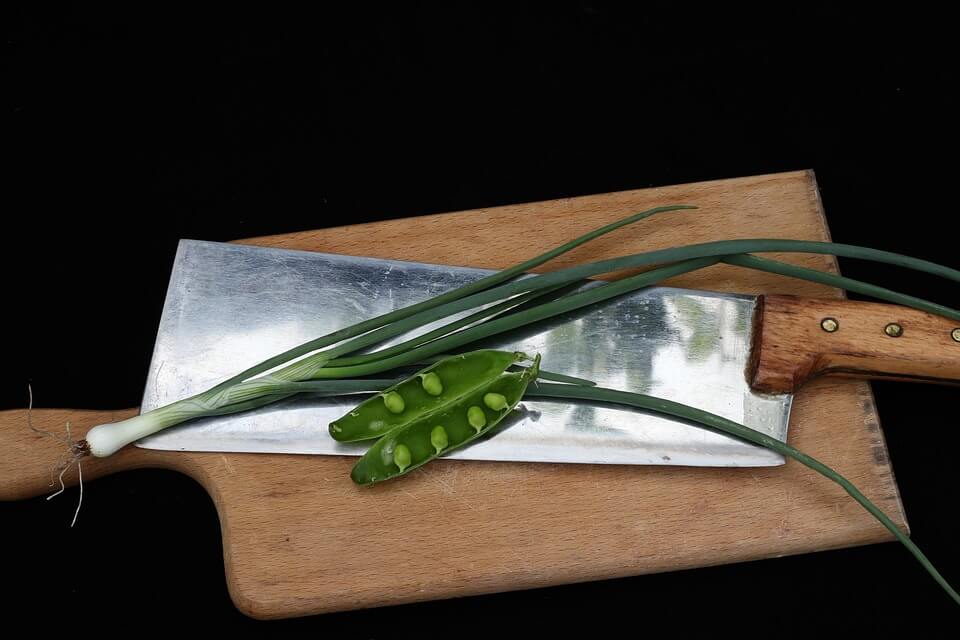
3. Hand Moving
Manufacturers design a Chinese cleaver to make chopping through tough ingredients easier due to its heavy blade and large cutting edge.
Therefore, the recommended cutting technique for a Chinese cleaver is the horizontal chop, also called push cut.
When using a Chinese cleaver, you place the ingredients on the cutting board and chop them horizontally with the blade. The broad side of the blade does most of the cutting work, making it easier to cut through tough ingredients.
In contrast, the chef knife is perfect for a rocking motion due to its curved belly.
The rocking motion of a chef knife is particularly well-suited for mincing garlic, ginger, and herbs, as well as slicing vegetables.
So to use a chef knife, you should hold the blade at an angle of 20 to 30 degrees and apply a back-and-forth rocking motion.
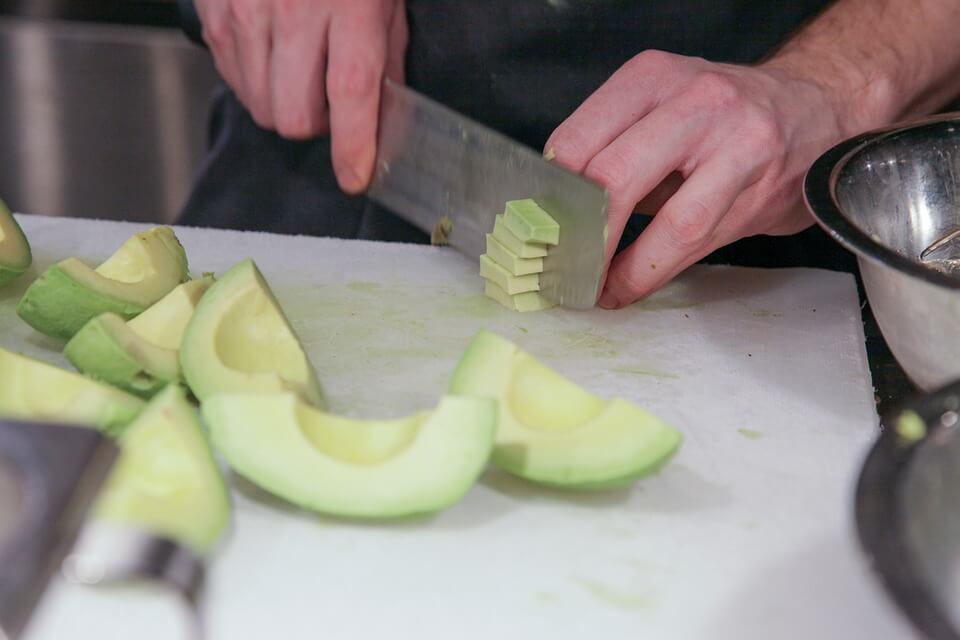
4. Uses
The Chinese cleaver and chef knife have different designs for different purposes in the kitchen. You can use a Chinese cleaver to cope with chopping, slicing, and dicing vegetables, fruits, and meats.
Due to their wider blade and steeper edge angle, they are handy for heavy-duty tasks like chopping through bones, splitting meat, and crushing garlic.
A chef knife is a versatile cutting tool for various kitchen tasks, including chopping, slicing, and dicing. It is great for preparing larger quantities of food.
I don’t recommend using a chef knife for chopping bones. A chef knife isn’t strong enough to handle the hard, dense texture of bone.
So attempting to cut through bone with a chef knife can damage the blade, resulting in chips, nicks, or even cracks.
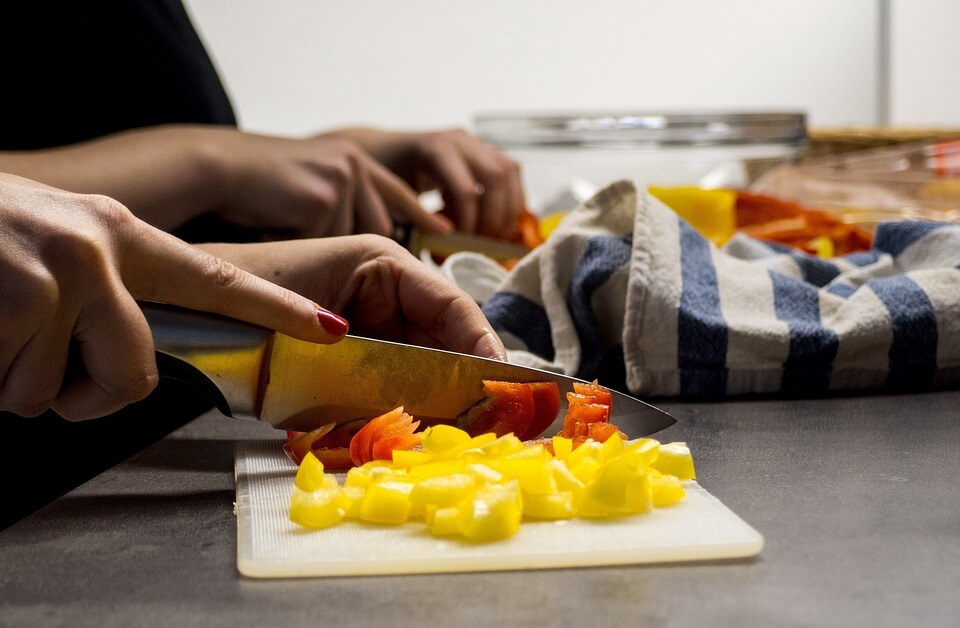
Comparison Table
|
Chinese Cleaver |
Chef Knife | |
|---|---|---|
|
Blade length |
6 to 9 inches |
6-10 inches |
|
Blade thickness |
0.07 to 0.31 inches |
0.01 inches is the best |
|
Weight |
300g to 900g |
200g to 300g |
|
Balance |
The blade is heavier |
The handle is heavier |
|
Hand moving |
Horizontal chop |
Rocking motion |
|
Uses |
Chopping, slicing, and mincing vegetables, meat, and bone |
Similar to Chinese cleaver except for bone |
Which Should You Choose?
The choice between a Chinese cleaver and a chef knife depends on personal preference and intended use.
A chef knife can perform a multitude of cutting tasks. The tapered blade design, coupled with a slicing motion, makes it ideal for chopping, slicing, and dicing vegetables, fruits, and meats.
The curved blade also enables a rocking motion, making it easier to chop herbs or mince garlic.
Its lighter weight and easier handling are suitable for people with smaller hands.
While a chef knife is a versatile tool, a Chinese cleaver is better suited for handling tougher ingredients.
The Chinese cleaver’s weight and broad cutting edge make it easier to chop through thick or dense ingredients, such as bones or large vegetables.
While a Chinese cleaver can be more difficult to use than a chef knife, its unique design offers distinct advantages, particularly for those who frequently work with tough ingredients.
Additionally, the broad cutting edge provides more surface area, making it an ideal choice for mincing or crushing ingredients such as garlic or ginger.
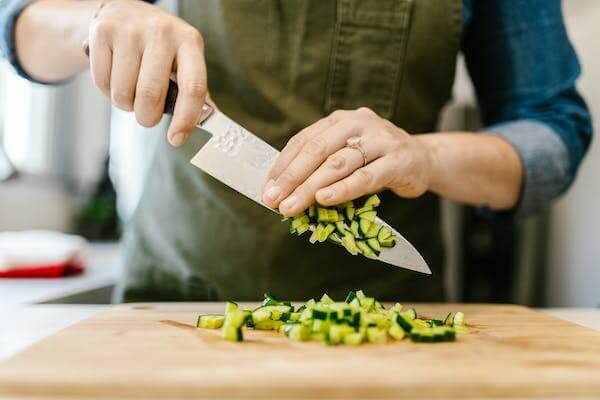
Final Verdict
The Chinese cleaver is excellent for chopping, mincing, and handling tougher ingredients, while the chef knife’s design is a better match for slicing, dicing, and precision cutting.
When deciding which one to use, it ultimately depends on your preference, the ingredients you are working with, and the dish you want to serve.
It’s always a good idea to have both knives in your kitchen and learn how to use them properly to maximize their capabilities.

